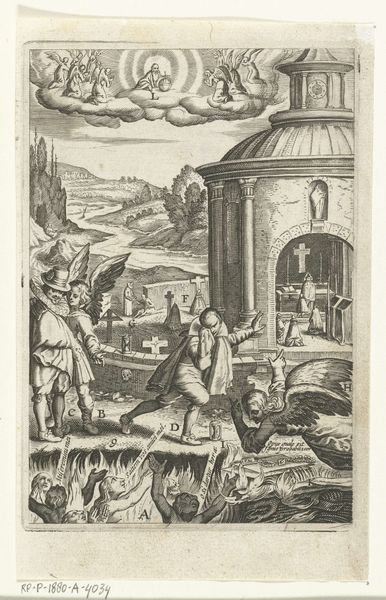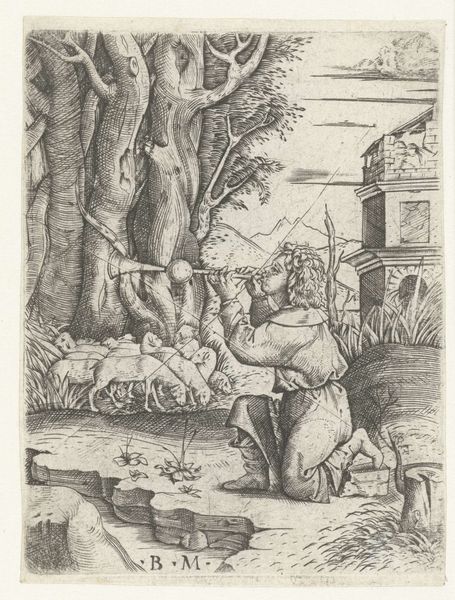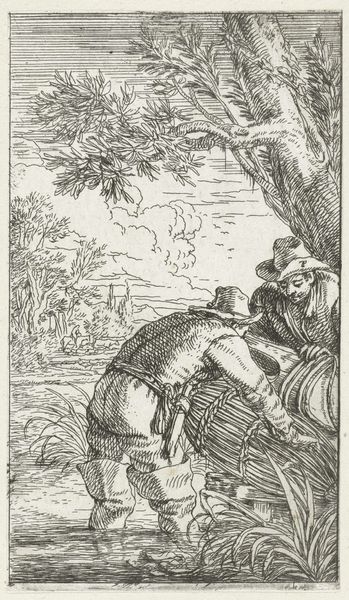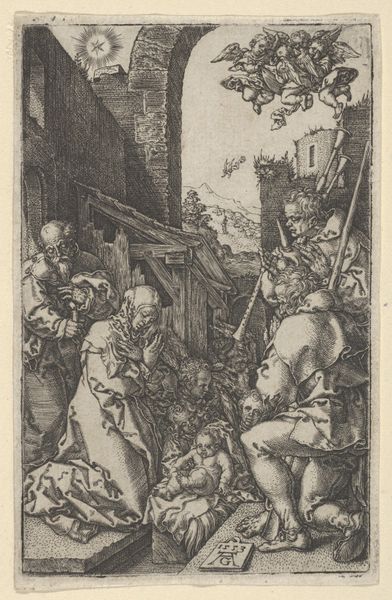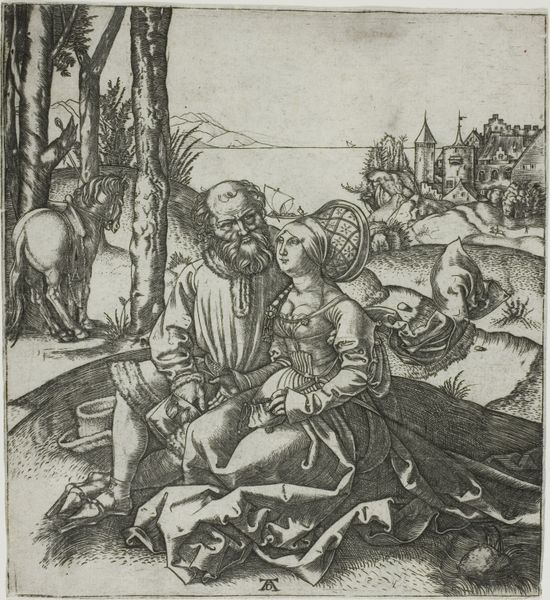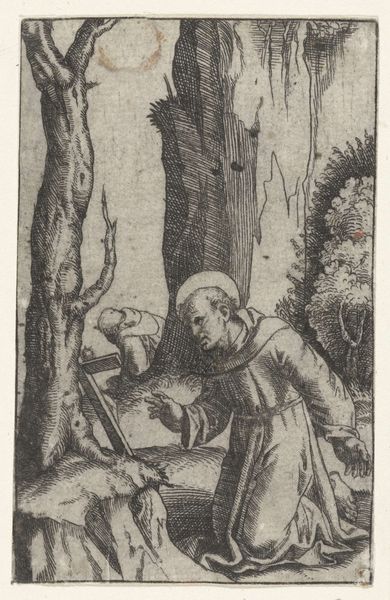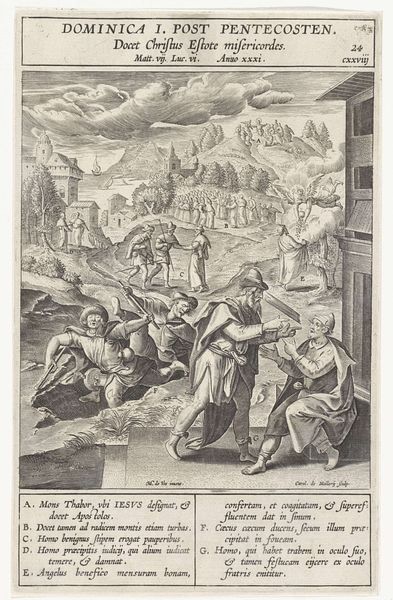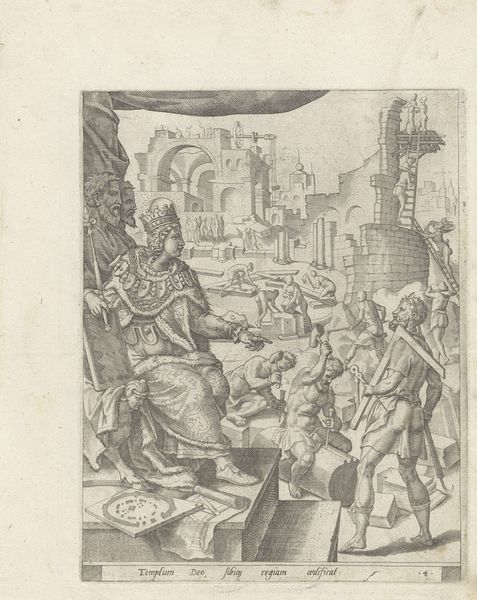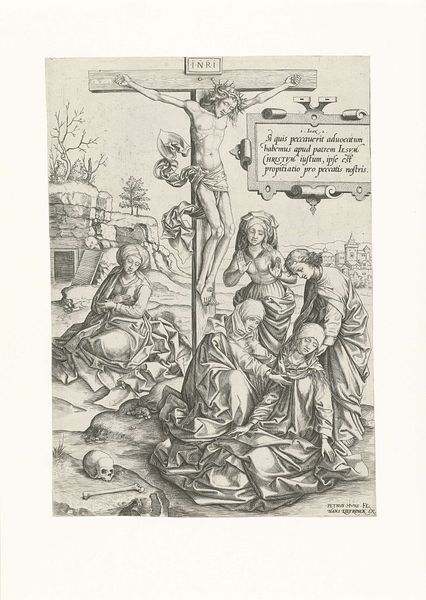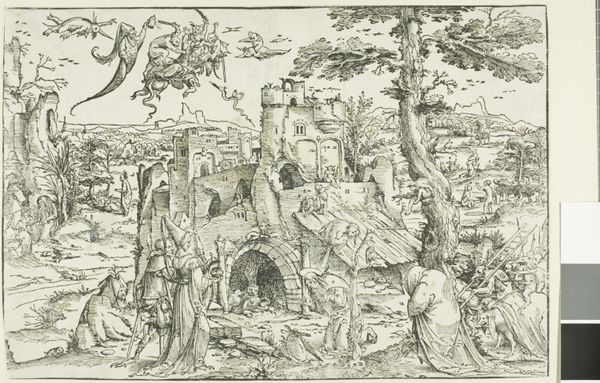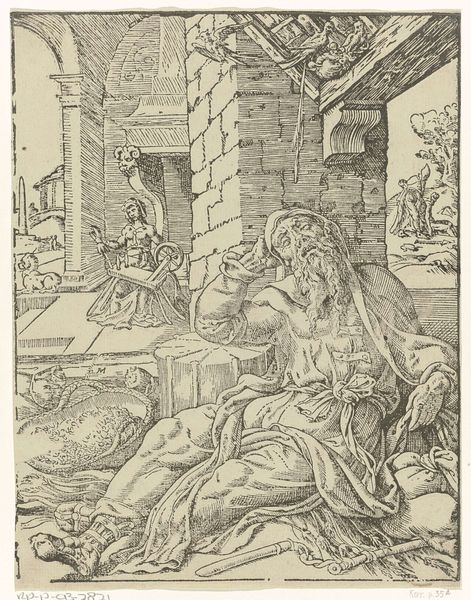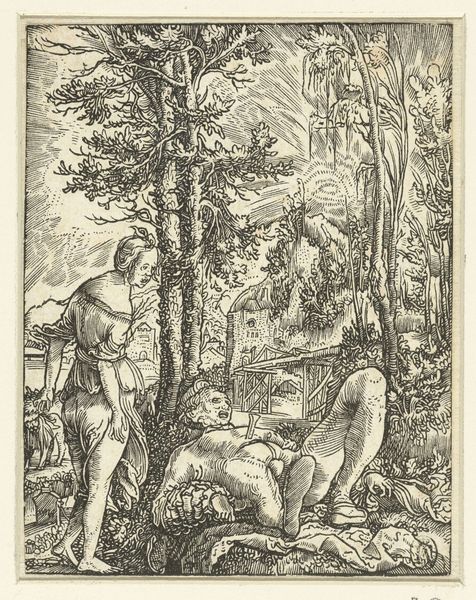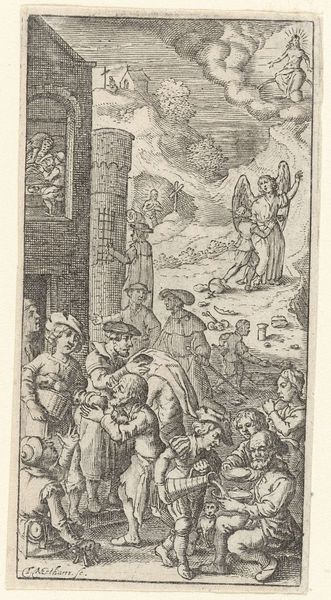
drawing, ink
drawing
mechanical pen drawing
pen sketch
landscape
figuration
11_renaissance
personal sketchbook
ink
sketchwork
ink drawing experimentation
pen-ink sketch
pen work
sketchbook drawing
genre-painting
storyboard and sketchbook work
italian-renaissance
sketchbook art
Dimensions: height 156 mm, width 109 mm
Copyright: Rijks Museum: Open Domain
Editor: This ink drawing, “Familie zit aan waterkant vlakbij ruïne” by Benedetto Montagna, from the early 16th century…it's got a surprisingly modern feel to it. There’s almost a snapshot quality in its rendering, particularly of the ruin and landscape elements. What jumps out at you about it? Curator: For me, it’s the directness of the process that speaks volumes. This wasn't a commissioned masterpiece; it reads more like an exploration of mark-making, an artist wrestling with perspective through accessible materials. The labor, the time investment, wasn’t directed towards creating a flawless illusion, but documenting or creating something else entirely. Editor: I see what you mean. It feels experimental. Was sketching like this common at the time, almost like visual note-taking? Curator: Absolutely. Consider the socioeconomic factors: Paper was becoming more readily available, making these kinds of spontaneous sketches more commonplace. Think about who had access to the materials, and what that access implies about their social standing and, moreover, the social function these images fulfill. The artist’s labor is visible, a tangible record of the changing social landscape allowing for new kinds of image creation. What's depicted here isn't only a family by a river, it's a shift in how images are being conceived, made, and used. Editor: So the drawing isn’t just a depiction of a scene, but evidence of a broader shift in artistic practices and access to materials. I hadn't thought about that! Curator: Exactly! And seeing art this way—as a material product reflecting social changes—can reveal so much about the period that conventional analyses overlook. Editor: Thanks! Considering the drawing's material circumstances provides a completely different and refreshing point of view to appreciate it.
Comments
No comments
Be the first to comment and join the conversation on the ultimate creative platform.
